Reviewed by Grant McCreary on March 27th, 2008.
Before becoming a birder, the Arctic would have been one of the last places I would want to visit. Too cold. Too barren. Too, well, cold! But now I absolutely need to go there. Despite global warming, it will still be colder than I’d like. But there are birds, and other creatures, that are found nowhere else. Moreover, it’s a chance to see some familiar birds in unfamiliar surroundings doing unexpected things, such as shorebirds singing! But perhaps most importantly, where I once would have perceived a barren landscape I now would appreciate a delicate and wonderful ecosystem that’s every bit as beautiful as a tropical rainforest or ice-capped mountain. Now I know where to turn to prepare for such an eventuality.
Four sections make up this book: an introduction to the Arctic; a field guide to its birds; a field guide to the mammals; and a short visitor’s guide to the Arctic. The introduction is one of the best things about the book, as it gives a very thorough overview of the region. It defines the area that the author considers “Arctic”, geology, climate, human impact, habitat, adaptations for Arctic life, speciation and biogeography, and threats. Altogether this introductory material spans 48 pages.
The visitor’s guide is a short, six page section at the end of the book. Obviously, that’s just enough room for the briefest of treatments, but anything more detailed is beyond the scope of the book. Still, this is a welcome addition. It includes sections on Iceland, Jan Mayen, Svalbard, Bear Island, Fennoscandia, Russia, Alaska, Canada, and Greenland.
Each of the field guides are organized in the same manner. Each family gets a short introduction covering the common aspects of the constituent species. A nice addition to these introductions is a list of species that come close to making the cut as an “Arctic species”, but falls short of the criteria set by the author.
Each species has a relatively comprehensive and in-depth account, and includes:
- General notes – some, but not all, species have notes at the beginning of the account that don’t fit under the other sections
- Identification
- Confusion species – limited to those within the Arctic
- Size
- Voice/Communication
- Distribution
- Diet
- Breeding
- Taxonomy and geographical variation
- Range map – shows only the range within the Arctic
The text is an easy read, as opposed to some guides where it is a chore. It’s also very informative; I learned a great deal just by reading the family introductions. Did you know, for example:
- Shrews’ perpetual hunger, combined with an unpleasant bite, has given these mammals a reputation as greedy and aggressive, which is the basis of the derogatory term “shrew-like”, often applied to mean-spirited persons.
- Skuas are not only aggressive predators, they are aggressive toward potential predators at nest sites, diving at anything, including birders, who venture too close. Nor are such attacks mere bluffs; I have been knocked down by a Great Skua and had blood drawn by a Long-tailed Jaeger.
The illustrations include both photographs and plates of paintings. The photographs are included alongside the species accounts, and almost all species have one. Additionally, there are some photos of species that aren’t considered “artic enough” for a full account. The plates are sprinkled throughout the text at the end of some family sections. It seems that in designing the book the author decided to insert a plate only when it could be filled with species, anywhere from three to fourteen per plate. As a result, there are 4 plates after the waterfowl section due to the large number of members from that family breeding in the Arctic. On the other hand, a single plate contains the owls, kingfishers, swallows, larks, pipits and wagtails.
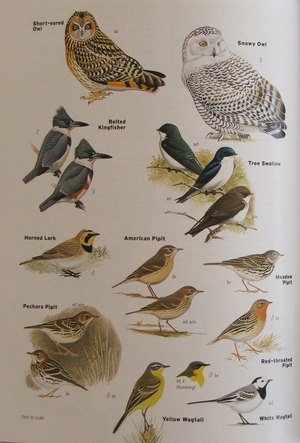 The quality of both the photos and plates range from ok to very good. However, some issues limit this book’s use as a field guide. For some sexually dimorphic species, the female is not illustrated in the plates. For example, only the male is depicted for most waterfowl species. Most of the females are shown in photos, however, but the plates are the first place one would turn to for identification purposes. But for other species, such as the Pine Grosbeak, the female is not shown at all. Also, scale is not consistent within plates showing members from different families. Thus, if one judges size only by the plates the user could be mislead to believe that a Tree Swallow is only slightly smaller than a Belted Kingfisher.
The quality of both the photos and plates range from ok to very good. However, some issues limit this book’s use as a field guide. For some sexually dimorphic species, the female is not illustrated in the plates. For example, only the male is depicted for most waterfowl species. Most of the females are shown in photos, however, but the plates are the first place one would turn to for identification purposes. But for other species, such as the Pine Grosbeak, the female is not shown at all. Also, scale is not consistent within plates showing members from different families. Thus, if one judges size only by the plates the user could be mislead to believe that a Tree Swallow is only slightly smaller than a Belted Kingfisher.
There are fourteen credited artists for the bird plates, and there are some obvious stylistic differences. At least some of the bird plates have been recycled from previous works. The shorebird illustrations are taken from Shorebirds of North America, Europe, and Asia. A few of the gulls are from the excellent Gulls of North America, Europe, and Asia
, but the colors are a bit different here. The Slaty-backed Gull, for instance, has a darker mantle than in the original book. In addition, the sparrows are from Sparrows and Buntings
.
A single artist provided all the mammal illustrations. While they appear to be adequate for field guide use, they are not very ascetically pleasing to me personally. The whales fare much better – those plates look very nice. However, I don’t have any mammal field guides that use paintings, so I have nothing against which to compare them. On the other hand, the photographs of mammals are great and make up for the disappointing plates.
Unfortunately, this volume contains some errors. On plate 1, the labels for Arctic and Pacific Loons are switched. The photo labeled as an American Tree Sparrow on page 320 is actually a Chipping Sparrow. Finally, the breeding female Snow Bunting on plate 28 is in fact a first year male (according to Sparrows and Buntings, where it was originally published). These make me concerned that there are more undiscovered errors, especially among the mammals, about which I am much less familiar.
Recommendation
I think that this book will be of limited value as a field guide to birds, mostly due to the limitations previously mentioned in this review. The lack of illustrations for all the forms that may be encountered (especially females) would alone necessitate having another field guide handy. Thankfully, there are plenty of good field guides available for most, if not all, of the Arctic regions. I’m much less qualified to pronounce judgment on the merits of the mammal field guide, but it appears adequate for that purpose.
However, its usefulness as a reference is unquestionable. Moreover, the introduction to the region provided here should be mandatory reading for any first time travelers to the Arctic, or anyone even slightly interested in this region. Thus, despite the issues and outright errors this book is recommended and will accompany me on my first journey to the Arctic (whenever that might be).
Disclosure: I get a small commission for purchases made through links in this post.

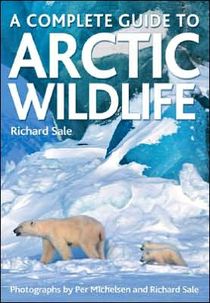


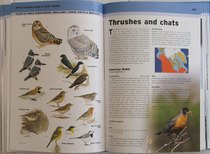
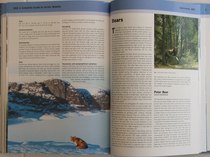
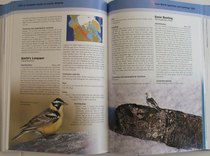

Comment